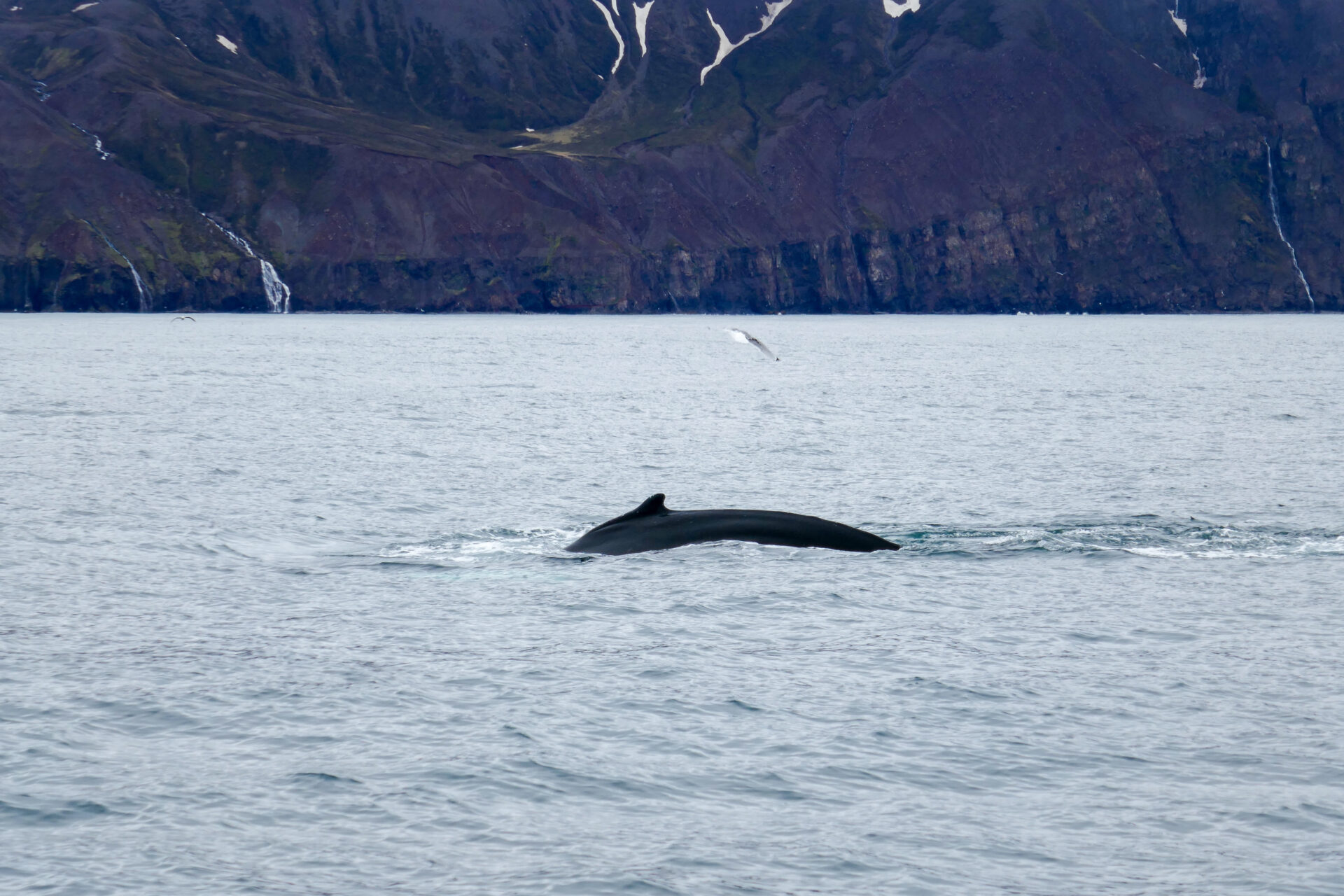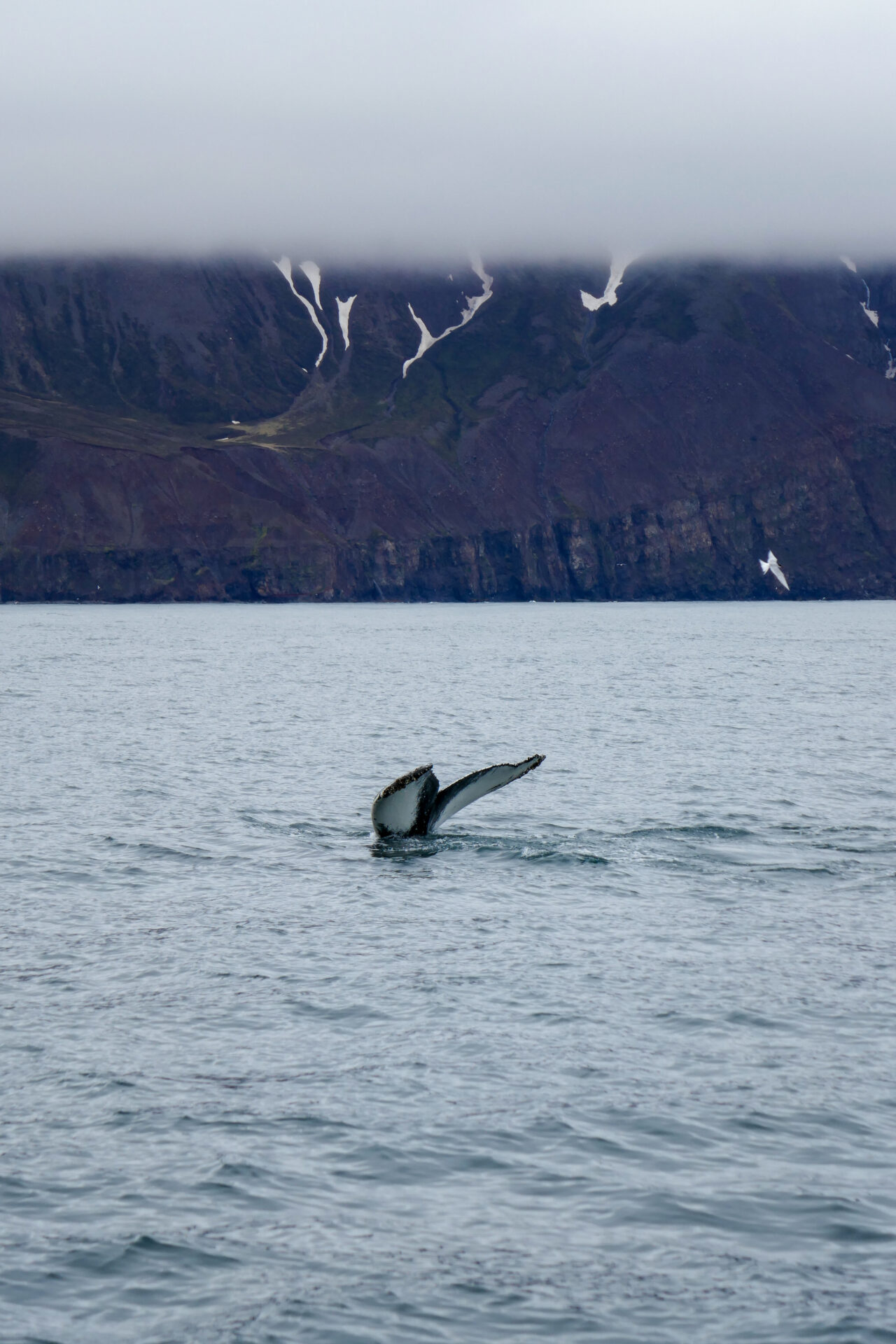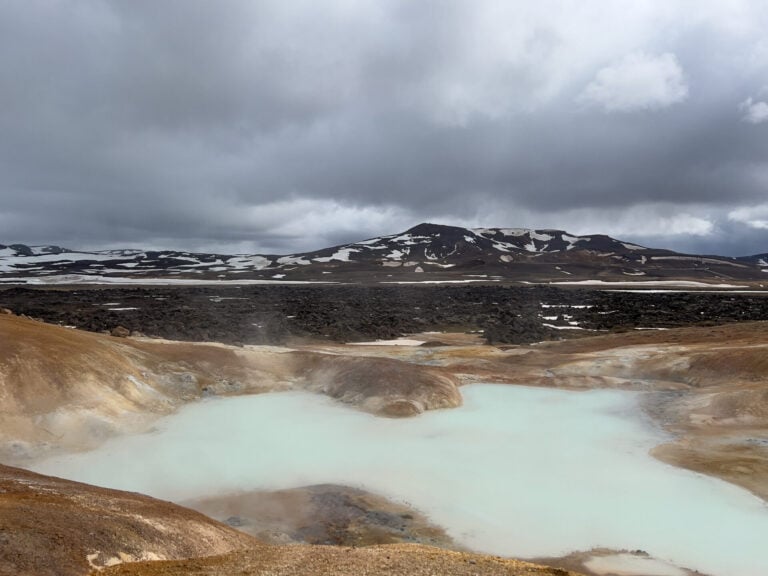Whale Watching in Iceland: A Quick and Simple Guide

Iceland is known for its powerful waterfalls, stunning glaciers and other-worldly volcanic landscapes. It’s also a haven for wildlife and nature, including marine animals. In fact, Iceland is one of the best places in the world to go whale watching.
In this post, I’ve shared a quick and simple guide to whale watching in Iceland. This includes where to go whale watching in Iceland, what species of whale you might see and the best time of year to try and spot whales.
When planning my solo trip to Iceland, whale watching was at the top of my activity list. However, it’s fair to say I was a little bit overwhelmed with the amount of information out there. It was hard to narrow down where to go and in the end, I did several whale watching tours around Iceland.
I’ve put everything I learned and experienced into a simple post below. I hope it helps you to plan your dream whale watching tour in Iceland.
A QUICK GUIDE TO WHALE WATCHING IN ICELAND
The best places to see whales:
- Visit Olafsvik to see Orcas.
- Head to Husavik for a chance to see the mighty Blue Whale.
- The waters surrounding Reykjavik and the Westfjords are a popular spot for Humpback whales.
- Akureyri is a whale watching hot spot with Humpbacks, Fin and Minke whales.
The best time of year to see whales in Iceland:
- In Reykjavik, whales can be found all year round. The most frequent sightings occur in the summer months.
- To see Orcas in Olafsvik, visit in the late spring through to June.
- Blue Whales in Husavik are common from late May into July.
Whales in Iceland
Iceland is a haven for marine animals. Its rich arctic waters are full of nutrients creating important feeding grounds.
There are around 24 species of whales living in the waters surrounding Iceland. This includes the largest animal on the planet – the Blue Whale. This makes Iceland one of the best places in the world to see whales.
A quick tip: for the best chance of seeing a Blue Whale, visit Husavik.
Whales are a big part of Iceland’s history and culture. Whaling, the commercial killing of whales, has long been an important industry in the country. In recent years, demand has dwindled and it will finally come to a complete end in 2024. Instead, the locals of Iceland now want to protect the whales and offer opportunities for visitors to see and learn about them.

In the north of Iceland, tour operators have even converted old whaling ships into whale-watching boats and enforce strict rules to protect the animals. In Husavik, there’s a whale watching museum where you can learn more about the country’s complicated past with whales.
So, what types of whales can you see in Iceland? There’s a long list of whale species around Iceland’s coast. Here are some of the most common species of whales seen on whale watching tours.
- The Humpback whale is the most frequently sighted on tours. It can be seen in Reykjavik, the Westfjords and in the north of Iceland (Husavik and Akureyri).
- The Minke whale is a common sight in Iceland. Sadly, they were long a victim of the Icelandic whaling industry. Now, they’re thriving and there are an estimated 13,000 Minke whales around Iceland.
- The Fin whale is the second largest whale in the world. They were also a popular choice for the commercial whaling industry. Despite this, their population still thrives in the waters surrounding Iceland.
- The Blue whale is the world’s largest animal. Each year, it’s estimated that 1000 Blue whales visit the north of Iceland.
- The notorious Orcas (killer whales) frequent the waters surrounding Iceland. Orcas can be found anywhere, but they’re most commonly seen in the Snaefellsnes Peninsula in the spring and summer.
- Sperm whales are another whale species sometimes seen on tours. Sperm whales prefer deeper water to hunt, but it’s not uncommon to see them in the Snaefellsnes Peninsula.

Where to see whales in Iceland
Time for the big question, where is the best place in Iceland to see whales? The answer… Husavik! A small and charming town in the north of Iceland.
Having said that, there are several epic destinations for whale watching all around Iceland.
Here are some of the best places to see whales in Iceland.
Whale watching in Husavik
Starting with a strong one here… Husavik has the best whale watching in Iceland. In fact, it’s known as the whale watching capital of Europe (and even the world).
Several species of whales, including Humpback, Fin, Minke and the mighty Blue whale, are seen in the waters of Husavik. The town is on the shores of Skjalfandi Bay which contains nutrient-rich waters and is an important feeding ground for whales.
Whale watching in Husavik is without a doubt one of the best wildlife experiences I’ve had anywhere in the world. There were so many whales I didn’t know where to look.
If you want to experience the best whale watching in Iceland, a visit to Husavik is a must.
When: you can whale watching in Husavik between April and September (weather dependent). Blue Whales are most commonly seen from late May into July.
READ NEXT: A Complete Guide to Whale Watching in Husavik
Whale watching in Akureyri
Akureyri is known as the northern capital of Iceland. This lively town is close to Husavik and has some great whale watching opportunities.
While Husavik takes the crown, whale watching in Akureyri is still a fantastic option. Humpbacks, Minke and Fin whales are all a common sight on the tours.
Akureyri is also in a great location for those visiting Iceland on a cruise ship or travelling Iceland’s ring road with limited time.
For a slightly more peaceful whale watching experience, visit Dalvik which is about 30 minutes from Akureyri. It’s a little closer to the open ocean and the sighting success rate here is very high.
When: some whale watching tours operate all year round, but check with your tour operator. The best time to see whales is between April and October.

Whale watching in Reykjavik
If you’re not planning to stray far from Iceland’s capital, you’ll be pleased to hear that there are several whale watching tours operating from Reykjavik.
The tours operate all year round with Humpback and Minke whales being a common sight.
When: these tours operate all year round, but the best time to go whale watching in Reykjavik is between April and October.
Tip: Reykjavik is a fantastic place to base yourself if you’re visiting Iceland without a car.
Whale watching in the Snaefellsnes Peninsula
If you want to see Orcas in Iceland, consider visiting the Snaefellsnes Peninsula.
While Orcas (killer whales) can be found all around Iceland, the Snaefellsnes Peninsula is a popular feeding ground for them.
Laki Tours operates whale watching tours from the town of Olafsvik.
When: the tours operate from February to September, but Orcas are most commonly seen from early spring to June.
Whale watching in the Westfjjords
For an off the beaten path experience, head to the stunning Westfjords of Iceland. This remote area of Iceland is a haven for adventure and exploration. It’s also a nature-lovers paradise, with many animals calling the area home.
To see whales in the Westjiords, join a tour from Holmavik. It’s one of the best places to see humpback whales in Iceland.
When: the whale watching season in the Westfjords runs from June to October

When is the best time of year to see whales in Iceland?
Each of the whale watching destinations in Iceland have their own “best times of year”.
Whales live in the waters around Iceland all year, but the warming waters in the spring and summer attract whales in their masses to the island. Generally, the best time of year to see whales in Iceland is during the summer months of June, July and August.
There are a few exceptions to the rule however:
- Whale watching tours run all year from Reykjavik. Whales such as Humpbacks and Minke whales frequent Iceland throughout the year.
- Orcas are generally seen earlier on in the year. This isn’t a hard rule, but the best months to see Orcas in Iceland are between March and June.
- Whale watching in Husavik is available between April and October. To see Blue Whales, visit from late May into July.
- Whale watching is available all year in Akureyri.
How to see whales in Iceland
For your best chance at spotting whales, you will need to book a whale watching boat trip.
There are several operators all around the country offering the chance to see these magnificent creatures.
THE BEST WHALE WATCHING TOURS IN ICELAND
Husavik: I recommend booking a tour with Gentle Giants
Olafsvik: if you want to see Orcas, book with Laki tours
Reykjavik: I recommend this RIB boat tour, or for a unique experience, try this midnight sun tour
Akureyri: try this classic whale watching tour
Dalvik: Artic Sea Tours provide the best whale watching here
Tip: it’s not impossible to see whales from land in Iceland, but it’s not the most common sight.

Akureyri or Husavik for whale watching?
If you’re doing a road trip around the country, you’ll likely be passing through Akureyri. The capital of the north, the town is known for whale watching and is a great spot to see whales.
Having said this, I’d highly suggest doing the 40-minute drive from the ring road to Husavik instead. Seeing multiple whales here is almost guaranteed in the summer months and the gorgeous bay offers spectacular views. It’s not called the whale-watching capital for nothing.
Heading to New Zealand soon? Check out my guide to whale watching in Kaikoura for your chance to see the sperm whale.
How to see orcas in Iceland
Orcas frequent the waters around Iceland but spotting them can be a bit of a task. It’s often a case of luck. Olafsvik, located in the Snaefellsnes peninsula, offers the best chance to see Orcas.
You’ll need to book a trip with Laki Tours which operates tours from February through to September. The best time to see the Orcas is generally the spring through to June.
Sadly, when I went, the orcas were a no-show. The boat crew speculated that a recent earthquake had scared them away as they hadn’t been seen for a few days. Looking online, not seeing any orcas was a rare occurrence so I was just unlucky.
Laki Tours offered everyone a free tour voucher to use again in the future.

Summary: whale watching in Iceland
If going whale watching is one of your reasons for visiting Iceland, I’d highly recommend you leave the capital and try other areas such as Husavik or Olafsvik (both seasonal).
While the tours from Reykjavik generally have an okay success rate, the area is huge and you are less likely to have a close encounter if any encounter at all.
The northern towns of Akureyri and Husavik have a very high success rate. It’s also possible to see rarer species such as the Blue whale.
Wherever you choose to go whale watching in Iceland, it promises to be an unforgettable experience in Iceland.
Read next: plan your trip to Iceland with these 7-day itinerary ideas






